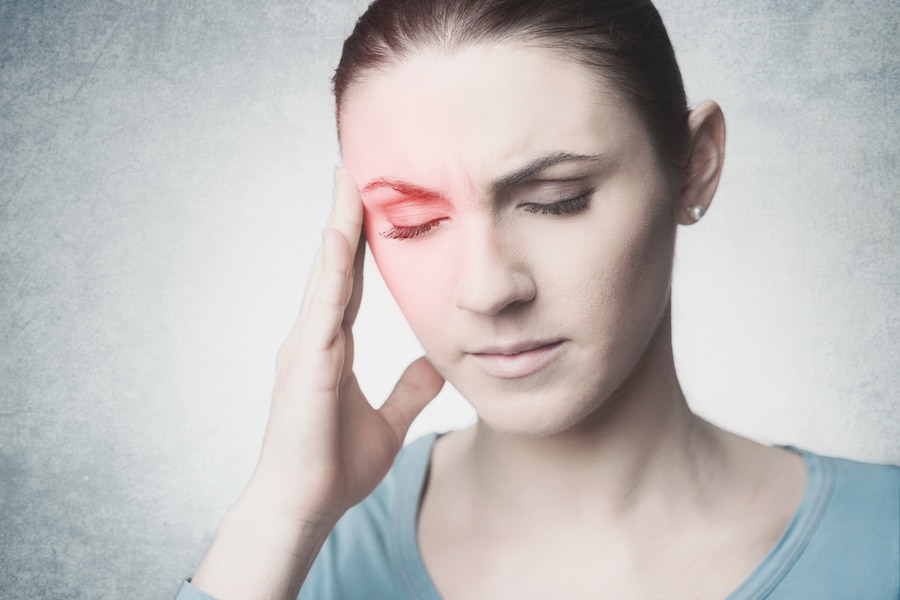Eye pain occurring side by side with a headache is an unfortunate commonality for many individuals who suffer from chronic headaches. These pains can be debilitating and long lasting, sometimes even requiring specialized therapies and prescription medications to properly manage.
Below, you will find the three main types of headache that cause excessive eye pain. Remember, if you are in severe or long lasting pain, it is good to stay informed, but better to seek medical advice from a trained professional.
Traditional Migraine
Traditional migraines afflict roughly 12% of the population, targeting women slightly more than men. Migraine headaches develop over the course of several hours to several days and are known to last up to 72 hours while still being in the range of normal.
Characteristically, these headaches are severe and impair functioning with a myriad of intense side effects in addition to pain, including:
- Nausea and/or vomiting
- Sensitivity to light and/or noise
- Dizziness
- Blurred vision
- Pain behind the eyes
- Pain localized to one side of the head
While some individuals can identify migraine triggers such as stress, certain smells, certain foods, or hormonal shifts, there is no singular cause of migraines.
Get Back Your Normal Life Again
As pain specialists, we can guarantee that we are more than qualified in alleviating your pain and treating your condition.
Ocular Migraine
The name of this particular condition is misleading to some as it does not indicate a headache that is localized to the ocular region. Instead, ocular migraines often accompany traditional migraines but cause changes in visual perception.
These visual disturbances vary between individuals, but includes shimmering or flashing light, auras, and splotches in the visual field (known as floaters).
Many times individuals will experience an ocular migraine before the onset of a traditional headache, giving them a heads up to a migraine attack. However, other individuals experience these after their headache has already begun.
Cluster Headaches
Cluster headaches are often confused with traditional migraines due to sharing several symptoms such as extreme pain and discomfort of only one eye. However, cluster headaches are unique in that they occur in “clusters,” usually several in a row, of short term, high impact pain. These clusters also commonly occur at the same time each day, for several days in a row. This cyclical behavior of the symptoms is where cluster headaches earn their name.
Other symptoms of this type of headache pain include swelling of the eye, sweating, tearing up, runny nose, and other autonomic symptoms such as a droopy eyelid on the affected side.
Other Possible Causes
Just because several types of migraine exist does not mean migraines are the culprit to all headache symptoms.
For those who are heavy computer users or read for several hours a day, eye strain could be a potential cause of headaches masquerading as migraine symptoms. This can sometimes be resolved by wearing screen protective glasses, or, by taking more regular breaks throughout the day.
Secondly, tension headaches are another cause of head pain in a wide variety of individuals. Pain from tension headaches is felt as compression or constriction, usually as though a headband was placed over the forehead and back of the skull. This is accompanied by neck pain and tension.
The main causes of tension headaches are stress, anxiety, depression, poor posture, and even head injury. Like migraines, tension headaches are more common in women than in men.
Seeking help
Most individuals experience occasional headaches that go away with over the counter medication, others experience chronic pain that interferes with daily activities. If you fall into the later category, it may be time to seek additional care to manage your pain and rule out any potentially serious external causes.
The Arizona Pain and Spine Institute boasts a full team of seasoned professionals who specialize in minimally invasive and clinically proven modalities to help manage and assess both long and short-term pain. Whether you need to be assessed for more serious medical attention or are looking for a location that can offer pain management and physical therapy, the Arizona Pain and Spine Institute can help.
Contact us at (480) 986-7246 for more information on the service we provide, find which doctor is right for you, and get on the path to discussing your next treatment options.

